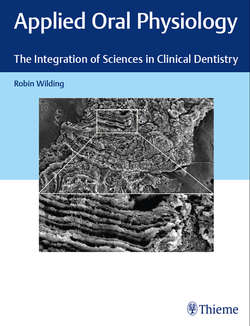Читать книгу Applied Oral Physiology - Robin Wilding - Страница 34
На сайте Литреса книга снята с продажи.
3 Oral Mucosa and Periodontium
ОглавлениеStructure of Oral Mucosa
Function of Oral Mucosa
Regional Variation of Oral Mucosa
Alveolar Bone
The Periodontal Ligament
Cementum
Junctional Epithelium
Abstract
Into this chapter are grouped the soft tissues of the mouth and the tooth-supporting tissues. The oral mucosa varies from the thin, fragile lining of the floor of the mouth to the rugged masticatory mucosa of the tongue and hard palate. These tough mucosal surfaces may have to withstand the rigors of masticating hard food. The periodontium which includes the structures supporting the teeth is of great importance to dentists. When it is infected and the tissue destroyed, the teeth may literally fall out. And notwithstanding all the progress in treating periodontal disease, it remains resistant to treatment in many patients. The junction between the tooth root and the supporting tissues provides a potential route of entry of bacteria into the body, which is unusual; all other external openings of the body are lined with epithelium with the exception of the fallopian tubes. The teeth are not held rigidly in their sockets like reptilian or fish teeth. They are able to move slightly in function and have the capacity to reposition as they erupt and drift when unsupported by neighbors or opposing teeth. An understanding of the dynamic structures of tooth support is essential to understanding the response of the periodontium to infection.
Keywords: oral mucosa, oral epithelium, lamina propria, masticatory mucosa, gingiva, periodontium, epithelial attachment, junctional epithelium, cementum
